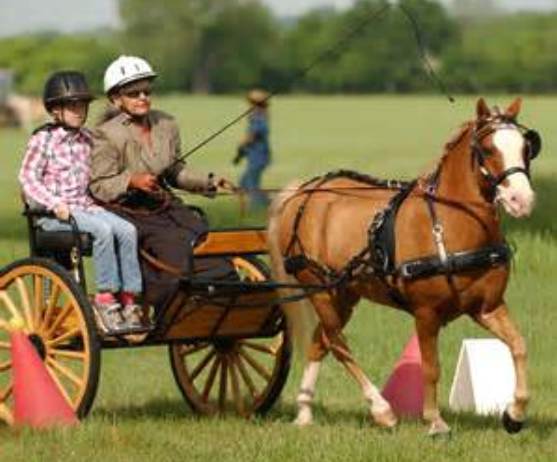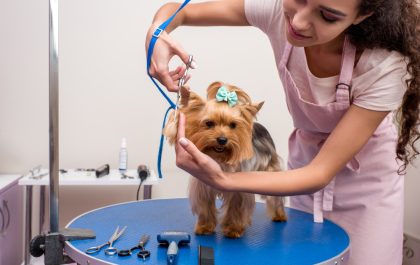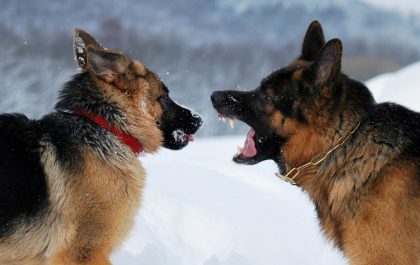Are you curious about Para-Equestrianism and what it can offer? If so, you’ve come to the right place! Para-Equestrianism is a sport that is growing in popularity in Australia and across the world. It is a discipline that combines the joy of horse riding with the challenge of competing in equestrian sports. It is a sport that is open to all, regardless of age, gender or disability. In this article, you will learn about the history, rules and regulations, and the different levels of competition available in Para-Equestrianism. So read on to discover more about this exciting sport!
What is Para-Equestrianism?
Para-Equestrianism is a form of equestrian sport for riders with disabilities. It is a Paralympic sport that has been around since the 1960s, and is now practiced all over the world. It is a sport that is open to people of all ages and abilities, and is a great way to stay fit and active.
Para-Equestrianism involves riders competing in dressage, show jumping and eventing. Riders are judged on their riding ability, horsemanship, and the performance of their horse. Riders are classified according to their disability, and compete against riders of similar abilities. Riders are also judged on their ability to control the horse, and the horse’s performance. Para-Equestrianism is a great way to get involved in a sport that is both physically and mentally challenging. It is a great way to stay active and have fun.
History of Para-Equestrianism
Para-Equestrianism is an equestrian sport that has been around for centuries, with its roots stretching back to the early 19th century. It is a sport that is open to riders of all abilities, and is a great way for those with disabilities to participate in equestrian activities.
In the early days of Para-Equestrianism, riders with disabilities were not allowed to compete in the same events as able-bodied riders. However, in the mid-20th century, the sport began to gain recognition and acceptance, and the first official Para-Equestrian competition was held in 1976. Since then, the sport has grown in popularity and is now an official Paralympic sport. The International Federation for Equestrian Sports (FEI) governs the sport, and there are now a number of international competitions, as well as national and regional championships.
Para-Equestrianism is a sport that is open to riders of all abilities, and is a great way for those with disabilities to participate in equestrian activities. It is a sport that is enjoyed by people from all over the world, and is a great way to get involved in the equestrian community.
Classification and Categories in Para-Equestrianism
Para-equestrianism is a form of equestrian sport that is open to athletes with disabilities. It is a unique sport that has been adapted to suit the needs of its athletes, and one of the key features of para-equestrianism is the classification and categorisation of its athletes.
The classification system is used to group athletes into categories depending on the type and severity of their disability. This allows athletes to compete against other athletes of a similar ability and ensures fairness in the competition. The categories are divided into four grades, with Grade I being the most severely impaired and Grade IV being the least impaired. Each grade is further divided into sub-categories, allowing athletes to compete against those with similar levels of disability.
The International Federation for Equestrian Sports (FEI) has developed a system of classification tests that are used to assess the disability of an athlete and decide which category they should compete in. The tests are carried out by a team of qualified medical professionals and include physical, psychological and riding assessments. The results of the tests are then used to assign each athlete to a category. This system ensures that the competition is fair and that athletes are competing against those of a similar ability.
Training and Preparation for Para-Equestrian Competitions
Para-Equestrian competitions are a unique and exciting way to experience the thrill of horse riding. Training and preparation for these events is essential for both horse and rider to perform to the best of their abilities.
The first step for any para-equestrian competitor is to ensure their horse is in peak physical condition. This includes regular exercise, a balanced diet, and regular visits to the vet. The rider must also be in good physical condition and have a good understanding of the sport. This includes having a good knowledge of the rules and regulations, as well as an understanding of the horse’s capabilities and limitations. The rider should also be familiar with the course and the layout of the event.
Once the horse and rider are both physically and mentally prepared, the rider should practice regularly. This includes riding the course, familiarizing themselves with the jumps, and practicing the movements and transitions required for the competition. It is important to practice in a variety of settings, such as indoors and outdoors, to ensure the horse and rider are prepared for any situation. Additionally, the rider should practice with a variety of riders to ensure they are comfortable with the different styles of riding.
By following these steps, para-equestrian competitors can ensure they are prepared and ready to compete at their
Equipment and Adaptations for Para-Equestrian Riders
Para-Equestrianism is a sport that caters to riders with physical disabilities. It is a subset of equestrian sport and is considered to be one of the most inclusive sport disciplines in the world. Para-Equestrian riders require specialised equipment and adaptations to ensure they are able to safely and effectively compete in the sport.
The most common equipment used by para-equestrian riders are adapted saddles and stirrups. Adapted saddles are designed to provide extra support and stability for the rider, while adapted stirrups are designed to provide an extra level of security and comfort. Other adaptations include adapted reins, adapted bridles, and adapted boots. All of these items are designed to ensure the rider is able to maintain control of their horse and remain safe while competing. Additionally, some riders may require the use of a specially designed mounting block to help them mount their horse.
In addition to equipment, para-equestrian riders may require additional support and assistance. This may include the use of a coach, assistant, or a specially trained horse handler. These individuals can provide assistance with mounting and dismounting the horse, as well as providing support and guidance during competition. In some cases, para-equestrian riders may also require the use of a specially designed wheelchair or mobility aid to help them move around the competition area.
Overall, para-equestrian riders require specialised equipment and adaptations to ensure they can safely and effectively compete in the sport. With the right equipment and support, para-equestrian riders can enjoy a successful and rewarding competitive experience.
Challenges and Benefits of Para-Equestrianism
Challenges of Para-Equestrianism
Para-equestrianism is a sport that requires great strength and skill. It can be a physically and mentally demanding activity, and there are a number of challenges that must be overcome in order to participate. The most obvious challenge is the physical strength and stamina required to ride a horse. Additionally, para-equestrians must be able to control and direct the horse, as well as understand the horse’s behaviour. Another challenge is the cost associated with the sport, as it requires the use of specialised equipment and the cost of lessons and competitions.
Benefits of Para-Equestrianism
The benefits of para-equestrianism are numerous. It is an excellent form of exercise, providing both physical and mental benefits. It can help to improve balance, coordination and strength. Additionally, the sport can help to build self-confidence, as it requires riders to take responsibility for their horse and their performance. Para-equestrianism also offers a great opportunity to meet people and make new friends, as it is a social activity. Finally, the sport can provide a great sense of accomplishment when riders achieve their goals.
Para-Equestrian Competitions and Events
Para-Equestrian competitions and events are a popular subset of the sport of Para-Equestrianism. These events provide an opportunity for riders with disabilities to compete alongside able-bodied riders in a range of disciplines. Para-Equestrian competitions and events are held in all states across Australia and are sanctioned by the Australian Para-Equestrian Association.
Para-Equestrian competitions and events feature both dressage and show jumping events. Dressage is a form of riding that tests the horse’s ability to respond to the rider’s commands and movements with precision and accuracy. Show jumping is a timed event that tests the horse and rider’s agility and accuracy in negotiating a course of obstacles. Para-Equestrian competitions and events also include a range of other events such as cross-country, polocrosse and mounted games. All events are judged on the same criteria as able-bodied riders, with competitors judged on their performance and technique.
Future of Para-Equestrianism and Opportunities for Participation.
The future of Para-Equestrianism is bright and full of opportunities for participation. With the sport’s growing popularity and recognition, more and more riders with physical disabilities are taking part in the sport. As the sport continues to gain traction, more and more people are becoming aware of the opportunities available to them to get involved.
In addition to increased recognition, the future of Para-Equestrianism also offers more opportunities for riders to participate in the sport. With the development of new rules and regulations, there are now more ways for riders to compete in the sport. Riders can now compete in both national and international competitions, giving them the chance to showcase their skills on a global stage. Furthermore, riders can also take part in a variety of other activities, such as training, clinics, and social events, which can help them develop their skills and knowledge of the sport. With so many opportunities available, riders can be sure that they will find a way to get involved in the sport.
Final Thoughts
Para-Equestrianism is an exciting sport that is growing in popularity in Australia and around the world. It is a sport that is open to riders of all abilities, and is a great way for those with disabilities to participate in equestrian activities. It is a sport that is judged on the same criteria as able-bodied equestrian sports, and is a great way to stay active and have fun. The sport is governed by the International Federation for Equestrian Sports (FEI), and there are a number of international competitions, as well as national and regional championships. Para-Equestrianism is a sport that is accessible to all, and is a great way to get involved in the equestrian community. With its growing popularity, Para-Equestrianism offers a wide range of opportunities for riders of all abilities to participate and compete.
Para-Equestrianism FAQs
You can get involved in Para-Equestrianism by finding a local equestrian center that offers Para-Equestrian programs or by contacting the United States Para-Equestrian Association (USPEA) for more information.
Para-Equestrianism provides physical and emotional benefits, such as improved balance, strength, and confidence.
The competitions in Para-Equestrianism include dressage, show jumping, and eventing.
Physical disabilities such as cerebral palsy, amputation, blindness, and spinal cord injuries can qualify an individual for Para-Equestrianism.
Para-Equestrianism is a sport that celebrates the strength and determination of riders with physical disabilities.
The classification system in Para-Equestrianism groups riders based on their physical disabilities and their functional abilities.
Para-Equestrianism has a few modifications in the rules and equipment to accommodate the physical disabilities of riders.
The dressage test in Para-Equestrianism is similar to able-bodied dressage, but it has a few modifications to accommodate the disabilities of riders.
Para-Equestrianism has been a discipline in the Paralympic Games since 1996, and it has been growing in popularity ever since.
Some inspiring Para-Equestrian athletes include Lee Pearson, Sophie Wells, and Pepo Puch.





